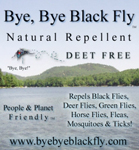Dogbane
by Fred Gralenski
We have two types of Dogbane here in the Quoddy region; Spreading Dogbane (Apocynum androsaemifolium) and Indian Hemp Dogbane (Apocynum cannabium). Both are very widespread, and can be found over most of the US and Canada. It is a little difficult to tell them apart, especially since they are closely enough related that they readily hybridize, but I’ve noticed more of the Spreading Dogbane. They both like dry, well drained soils and are a distinct nuisance to crops like wild blueberries, as they propagate by seed and underground runners. The dogbanes are winding down their growing season, and the flowers are past their prime, but still handsome with the delicate pinks. The genus name, Apocynum, means ‘poisonous to dogs’ which it is, and also to us and all livestock, but fortunately dogbane is very bitter and most animals shy away from eating sufficient quantities that may be toxic. The sap of dogbane is a white, sticky latex similar to the sap of milkweed, which is in the dogbane family. Both types of plants furnish food and habitat for the Monarch butterfly, especially in the larval stage. The Monarchs assimilate the toxins in the plant and are well known throughout the animal world as being unpalatable and are avoided on sight. Some moths, like the Dogbane Tiger Moth and the Milkweed Tussock Moth, also feed on Dogbane and assimilate the toxins and, since they mostly fly at night, reportedly have developed sonar defenses against bats to announce their bad taste. The flowers of dogbane are visited by honeybees and butterflies, as they are a good source of nectar, but unsuspecting flies may become trapped in the flowers, hence another common name is ‘Flybane’.

The latex sap may have some qualities to be processed into a substance like natural rubber, but so far no commercial ventures seem to be forthcoming. The roots, bark and sap, however, do have some interesting medicinal qualities. Most references list dogbanes as being poisonous with many cautions, as diarrhea, vomiting, slowing of the pulse, excessive perspiration, dizziness, mechanical instability, skin irritation and coughing could be induced, however dogbane does have a large (and hopefully careful) following of herbalists. A mild concoction of dogbane juice applied to the scalp is supposed to provide the proper irritation to stimulate hair growth. The fresh juice of dogbane root mixed with alcohol has been used for the treatment of syphilis. (I guess this is better than the mercury compounds that were once prescribed.) A drop of fresh latex sap on a wart applied 3 times daily was guaranteed to get rid of the offending wart. For birth control a decoction of two roots of dogbane and one quart of water brought to a boil and allowed to simmer on the back of a wood stove for an hour and drinking a small dose of the liquid was recommended to prevent conception. Now I’m pretty much of a skeptic when it comes to herbal medications but I can see some wisdom in that. I would think that a good case of diarrhea and some vomiting, often precipitated by ingesting dogbane, would calm down even the most passionate romance. Native Americans had known about dogbane for thousands of years, and utilized not only the chemicals but also the plant itself. In late summer , when the seedpods were forming, the fibers in the bark, especially Indian Hemp Dogbane, could be stripped off and made into a fine, strong thread, and this they used for sewing and making bowstrings and snares. They found that dogbane fibers also retained their strength when wet, and were therefore extensively used in fishnets.
I find it very interesting that dogbane has so many potential uses. Some of those listed are in error; either by percentage, or mixture, or just basically incorrect, but I firmly believe that there are a myriad of uses yet to be discovered, as some preliminary studies indicate tumor lessening qualities. And there are a myriad of plants like dogbane.





Apocynum androsaemifolium, Apocynum cannabium
Hello: In our recent book, The Midwestern Native Garden – Native Alternatives to Nonnative Flowers and Plants, An Illustrated Guide, we reference dogbane species as native alternatives to butterfly bush (Buddleia), which is invasive in parts of the Midwest. However, it is very difficult to locate commercial sources of dogbane. I found one source for common dogbane or Indian hemp, but they could only provide one plant. I have found no sources for spreading dogbane. Do you have suggestions for commercial sources for both dogbanes? Thank you. Charlotte Adelman